#by picking an accessible activity (like a cafe with parking close by and no stairs)
Text
I feel bad just ignoring the phone when it’s someone I know, but at the same time I cannot deal with this woman’s energy right now
#she is perpetually on 1000000000 and is probably trying to convince me to do something i physically cannot do#because she doesn’t believe my knee injury is as serious as i say it is because she has never once dislocated a joint and torn two ligaments#in the process. and also she doesn’t know what it’s like to be in my body#doesn’t matter how i tell her ‘i can’t stand up or walk no longer than 10 minutes and i am VERY unstable and in a lot of pain when i do#those things’. she somehow hears ‘invite me to a crowded pub and then to a very large shop which has no lifts or escalators.#then guilt trip me when i say ‘no’’#that or she wants to let her kid run wild in my house again while she herself sits on her phone#i love the kid don’t get me wrong. it’s not her fault her mother can’t parent#what really got on my nerves was she kept apologising for being on the phone but then never got off her phone#in my mind an apology means ‘i will try my hardest not to do it again’. not ‘i recognise this is wrong but if i keep saying sorry maybe i#can keep doing it and you won’t be mad at me’#it’s a BIG pet peeve for me. if you intend to keep doing something then stop apologising imo#i was just like. i don’t want this. i’m sitting here eating my tea; i look like shit because i’m in the midst of an eczema breakout#i’m not wearing actual pants.. i don’t want to be dragged out and presented to the world#AND i don’t want anyone in my house#and i don’t want anyone guilt-tripping me for not wanting to do some random spur of the moment plans. because she ALWAYS guilt trips me#and i’m just like.. literally don’t ask the question if you’re not okay with a no. especially if you refuse to accommodate me#by picking an accessible activity (like a cafe with parking close by and no stairs)#like you don’t have to accommodate me every time you decide to make a plan; but if you’re going to pick something you know i can’t do#you’re literally not allowed to be mad when i say i can’t do it. that doesn’t WORK#imagine if i invited one of my vegan friends to a fish and chip shop where everything is fried in lard#and the vegan options are literally mushy peas if they’re lucky#i either need to be okay with the refusal OR i need to pick a restaurant with abundant vegan options in the first place#or both tbh. because no one is obligated to go out with you!! thank you for coming to my ted talk#personal
0 notes
Text
Yakuza 6: The Song of Life Review

The end of Kiryu’s story. As ominous as it sounds, that’s one of the biggest selling points of Yakuza 6: The Song of Life. The character that has been leading the series since its very first game finally has an ending chapter to its saga. As an old-time fan, that made me worried and intrigued: How do they plan to end its story? What’s the series going to do moving forward? And, more importantly, how does the game compares to its predecessors, with all the changes made to its engine?
The following review aims to be as spoiler-free as possible, but be advised some spoilers may occur for previous games of the series, like Yakuza 5. Read at your own discretion.
Kiryu Kazuma, the series’ main character, spent several years in prison following the events of Yakuza 5. He is released only to find out that Haruka is in a coma after having been hit by a car. She also had a kid, Haruto, who is at risk of being taken to an orphanage. Kiryu must fight for and maintain custody of Haruto, while investigating the strange mysteries surrounding Haruka’s accident. The stage is set as we initially enter Kamurocho once again, and after he begins his investigation, the trail leads to Onomichi: a peaceful town that is more than it seems.
youtube
The new Dragon Engine was introduced in Yakuza 6, bringing several innovations to the series. For starters, the graphics got a revamp compared to the older engine (used from Yakuza 5 to Yakuza Kiwami), being the first game developed exclusively to PS4. The level of detail in textures, character models, and the world itself, is outstanding. A common complaint about Yakuza 6 is the presence of screen tearing on the game, but I must say I wasn’t able to notice said issue. It’s worth noting that the game runs at 30fps, compared to 60fps on Yakuza Zero and Kiwami. New physics were added, both to the open world exploration and the battles. Exploration-wise, Kiryu can now jump over things, climb stairs, and even fall down from certain buildings. The inventory has also changed. You don’t need to send items to a hideout-like place, like in previous games. Your inventory can store as many items as you like; however, you can only hold 5 of each health/heat restore items, or 10 of each food/beverage items.
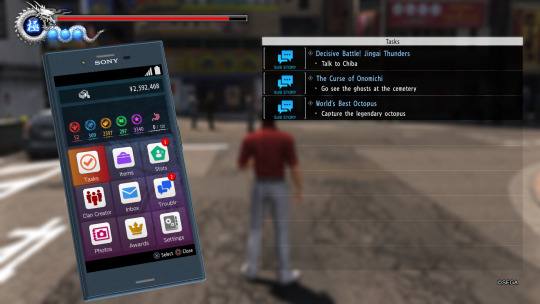
Things have changed - the year is 2016 and even Kiryu has a smartphone now, which acts as the game’s menu. Through it, you can find your current tasks and missions; access your inventory; check your stats and mail; check your completion list; change settings; and even take photos or selfies.
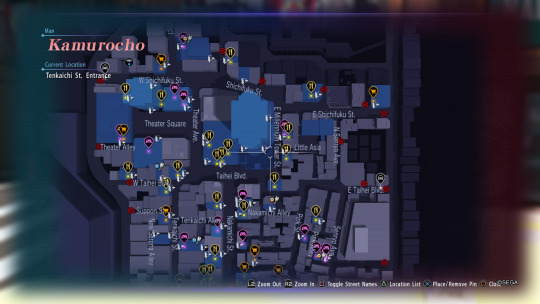
With the new graphics engine, Kamurocho has been completely reworked. We have new explorable areas, like Millenium Tower’s rooftop gardens and the Kamuro Theater. We can enter and explore several random buildings, making the city more alive than ever before. We have the same number of taxi stops as before, but more destinations as a whole. It’s worth it to note that certain portions of the map have completely changed. Little Asia is a primary example, and some underwent… peculiar changes, like Pink Street, which is in a diagonal orientation now. However, not everything is good news: some explorable areas that have been around since the first game have been removed, like the Champion District and the Kamurocho Hills/West Park area. We also have fewer stores than before (Kotoburi Drugs, for example, is gone).

Onomichi is considerably smaller when compared to Kamurocho, and has less shops, restaurants and entertainment spots. This more accurately reflects the cities’ real-life counterparts. It’s a port town based on a Hiroshima city that goes by the same name. Here you can access the spearfishing and baseball mini-games, as well as the Snackbar Gaudi. Snack bars are, on that note, popular places on Onomichi to hang out, considering the city doesn’t have Cabaret Clubs. You can also find a few restaurantes, a temple, and a pawn shop.
youtube
We have quite a few new minigames compared to previous games, like the Live Chat, which - more than just being sexy - manages to be funny and quirky due to Kiryu’s reactions; full ports of SEGA games, like VF5FS and Puyo Puyo; and classic arcade games from the 80s, like Space Harrier.
The RAAP Gym features a series of minigames where the player should press the buttons accordingly to make Kazuma exercise. After a session, the trainer recommends a dish you should eat, which impacts the evaluation you receive. Before you attempt to train again, you need to engage in a random encounter in the city.
There’s also a baseball team management minigame. You can recruit new members through substories or around the city and train them. On a match, you can manage your players and sometimes control the hitter. It’s a bit confusing, and, honestly, I didn’t manage to find it too enjoyable.
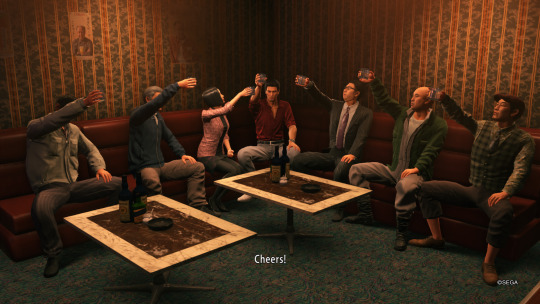
The Gaudi Snack Bar - unlocked during the baseball team quest line - is actually one of the most fun addictions to Yakuza 6, mini-game wise. For it, Kiryu is invited to a small and familiar bar in Onomichi. In the minigame, you speak with NPCs about their problems, enjoy a few drinks with them, and can even play darts or sing Karaoke. All these things help you develop your friendship with them. Each NPC has its own story, and each one of them is enjoyable, and some of them are tough nuts to crack - you will will need to be persistent with these. I’ve gotten so invested in this specific portion of the game I started to think about the NPCs as close friends of Kiryu, and it made me like Onomichi itself a lot more, since some of these characters are shop owners. It’s a simple yet great addition that gave even more life to the city.
youtube
The Clan Creator is another minigame first introduced in Yakuza 6. It involves recruiting NPCs to your very own Kiryu Clan and using them in battles - but Kazuma himself doesn’t fight, he just commands them like in a strategy game. You can set your hierarchy: Captain, Lieutenants and so on. There’s also an online mode available, where you can fight other player’s Clans. You can, also, add new members to your Clan by entering codes, made available at several different places and through the Yakuza Experience website.
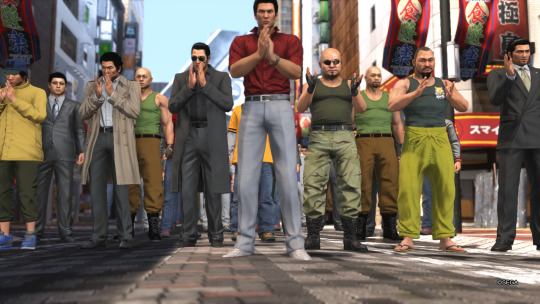
Another feature is the opportunity to help a Cat Cafe that… happens to have no cats, since its owner doesn’t do well with the animals and they all ran away. It’s up to Kazuma to find new cats in Kamurocho or Onomichi for the shop by giving them food and earning their trust. After you max out the trust gauge of a cat, someone will go get the felline, which you can always see in the Cafe from then on.

The spearfishing minigame is basically a shooter with a fishing theme. You can earn money from the fishes you catch, and there’s a spearfishing level: the higher your level, the higher your HP in this minigame. You have different spears to choose from and three different areas to fish in - both selections make an impact on the mini-game difficulty.
Some classic mini-games have been removed, like bowling, pool, UFO catchers, and gambling. Changes have been made to Karaoke and its song list: they are all new this time around. The batting cage minigame has also changed slightly. The Cabaret Club minigame has also been reworked, with a new card-based system that has made it more enjoyable.
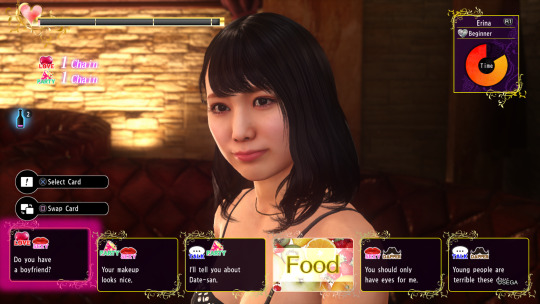
Yakuza 6 has 52 substories in total, from which a considerable amount is tied to mini-games like the Snack Bar Gaudi, the Clan Creator, and the Baseball team. We also have 40 different Trouble Missions. Trouble missions are picked through the app ‘Troublr’ on Kiryu’s phone. They usually require the player to battle against an enemy or a group of enemies who’s causing - as the name implies - trouble in Kamurocho or Onomichi. Trouble Missions usually spawn nearby you, are time restricted, generally under 5 minutes, and are considered failed if you engage in another event (like a cutscene or a minigame).
The soundtrack and effects of the game are once again memorable. Differently from previous games, there’s no opening theme this time. On the other hand... some of the songs really stand out, like Joon-gi Han’s theme, several battle themes, and some of the karaoke songs (prime examples would be ‘Hands’ and ‘Today is a Diamond’).
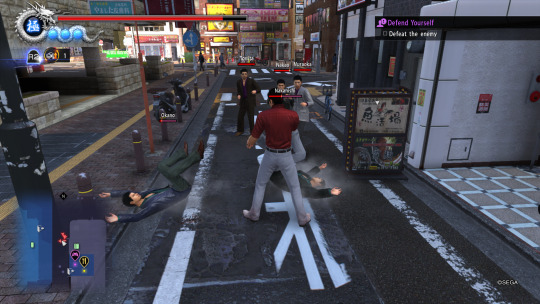
With the new graphical engine and physics also came a new combat system. The very core of it - characteristic to the series - remains the same: fight, do combos, use heat actions. However, the changes run deeper. It was reworked from the ground, with completely new combos, actions and Heat Actions. Unfortunately, Heat Actions are one of the biggest flaws of Yakuza 6 in that there are very few of them. That said, the new physics also make the combat both hilarious and satisfying at times: it’s not rare to see objects being destroyed simply by running through them, or enemies being thrown far from you by doing a combo finished with a kick.
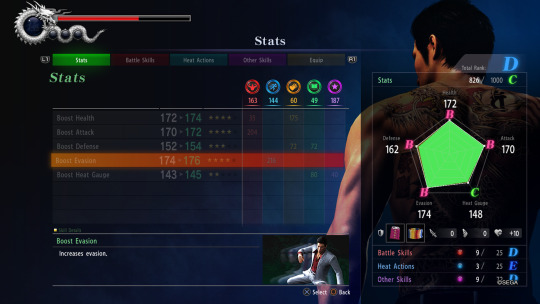
In Yakuza 6 - once again - we see a new leveling system. We have five different experience points: Strength, Agility, Spirit, Technique and Charm. Different activities award different amounts and different kinds of experience. For example, you will get more Strength and Agility by fighting than by doing entertainment activities. You can spend experience points on basic stats (Health, Attack, Defense, Evasion, and Heat Gauge), battle skills, heat actions, and other skills.
We also have an in-depth buff system this time, like increased experience gain, increased money drops, increased stats, and so on. They can be achieved through different means (such as temple blessings, statue offerings, food buffs, and machine drinks) and last a set amount of time or battles.
What was played:
A full playthrough of the main story, 40 substories, and all minigames at least once. Around 60 hours of game time.
Pros:
Graphics are gorgeous and detailed
Great OST
The cities seem alive and as detailed as ever
Several new minigame addictions are fun and rewarding
Good story with likeable characters - both on the substories and the main plot
Cons:
Certain classic mini-games were removed
Areas that have been accessible in Kamurocho since the first game, like the Champion District and the West Park/Kamurocho Hills area are off limits now
Combat seems simplified compared to Zero/Kiwami: less combos, less heat actions
No system to craft weapons, or even to carry then
Verdict: A fitting end to Kiryu’s story, with great graphics, OST, and side content, but not without a few hiccups. Fewer heat actions and the removal of certain minigames detract from it, when compared to previous games of the series.
Score: 8.5/10
Disclaimer: Reviewed on a standard PS4 model using a review code provided by the publisher.
29 notes
·
View notes